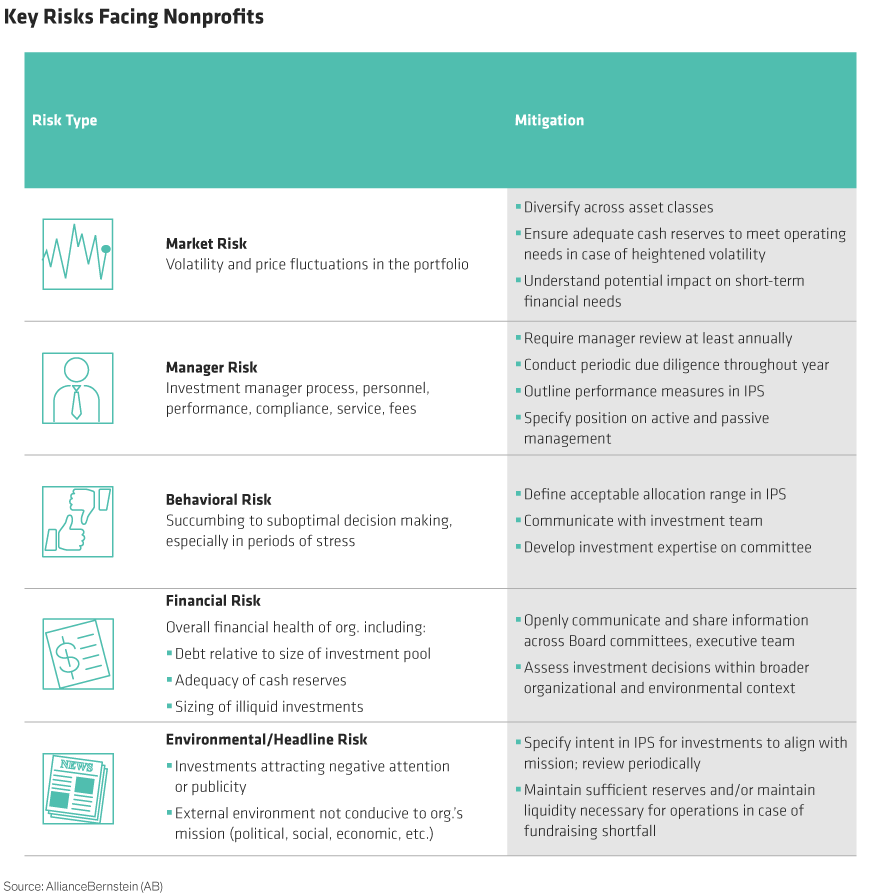Market volatility has justifiably jumped to the top of the wall of worry in recent weeks as trade concerns and interest rate uncertainty transfix the markets. For investment committees and other fiduciaries overseeing funds intended to support an organization’s mission, this resurgence of market turbulence may feel particularly jarring. But now is not the time to be reactionary.
Assessing Risk
When markets become turbulent, many investment committees fear they are not doing enough to stem losses or protect assets. But reacting to the market, especially in the name of risk management, is never a good formula. On the contrary, preparing for a broad spectrum of risks and planning for the organization’s financial health and sustainability are critical. With that in mind, we created a template of common institutional financial risks, and actions investment committees can take to mitigate the impact on the organization’s mission. (Display)

Group think?
Committees are made up of individuals with a variety of experiences, biases, and views on the capital markets. In an ideal world, this diversity conceives a well-rounded decision process that merges viewpoints from every angle. Unfortunately, it can also foster disagreement and impede consensus.
However, during periods of heightened market uncertainty, taking a wide-angled look at the environment is challenged by fear, which may lead to deference among committee members to the loudest voice at the table. Rather than follow this path of least resistance, an effective committee should create an integrated framework, including a comprehensive assessment and action plan of the risks most salient for them. This framework should build upon the foundation of a well-constructed strategic asset allocation. In our recent white paper, “Balancing Structure and Flexibility,” we verify the importance of strategic asset allocation in realizing an organization’s mission, and explore why codifying rules for tactical moves makes sense to combat shorter-term market turmoil.
Market Risk is NOT the Greatest Risk
Market volatility, while disturbing, is not the greatest risk to nonprofits. One reason is the long-term nature of a nonprofit’s overall mission. More importantly, it’s because nonprofits should have an established, well-thought-out plan—anchored by its strategic asset allocation—to meet short-term spending goals in light of erratic revenue or market conditions. Because, ultimately, the biggest risk to nonprofits is the failure to fulfill their goals and mission. Over the long-term, periodic spikes in market risk will pale in comparison.
For more on timely topics for nonprofits, explore “Inspired Investing”, a new Bernstein podcast series that covers investing, spending, policy and more for Endowments & Foundations, and for additional thought leadership, check out the related blogs here.
The views expressed herein do not constitute research, investment advice or trade recommendations and do not necessarily represent the views of all AB portfolio-management teams.